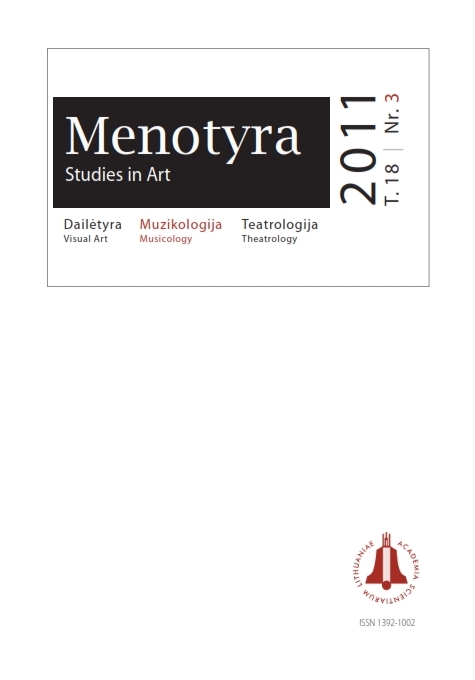Prie muzikos retorikos ištakų: keli grigališkosios monodijos pavyzdžiai
To the origins of musical rhetoric: a few examples from the Gregorian chant
Author(s): Aleksandra PisterSubject(s): Language and Literature Studies, Cultural history, Music, Theoretical Linguistics, Middle Ages, Sociology of Art
Published by: Lietuvos mokslų akademijos leidykla
Keywords: musical rhetoric; musical rhetorical figure; musica poetica; Middle Ages; Renaissance; Baroque; Gregorian chant; relationship between words and music
Summary/Abstract: This article studies such examples from the 9th–11th century Gregorian chant, where the text and music are given prominence by the means of the so-called musical rhetoric, allowing these compositional solutions to be described with the definitions of musica poetica. The associative (visual or sonic) ways of combining ecclesiastical texts and melodies, and their variations in the chants are analysed from the perspective of Renaissance and Baroque musical rhetoric. It is pointed out that the roots of musical rhetoric, which peaked in popularity during the Baroque period, were identified in the liturgical chant with the following elements and features characteristic to musical rhetoric: •Expression of language syntax via music, including the imitation of interrogative intonation in the prophetic readings (lectiones), for instance, from the Book of Isaiah, were the musical rhetoric figure interrogatio is used; •Accompanying of words indicating directions (for example, ascend, heaven, descend) with an ascending or descending melody – ascensus and descensus; •Sonic imitation of subjects mentioned in the text (e. g., a dove) – onomatopoeia; •Certain words (for example, listen, rejoice) highlighted with melismas – hypotyposis; •Prominence given to personal names (e. g., God) with rhetorically significant melismas. The article deals with those examples from the Gregorian chant which have an explicit structure of musical rhetoric figures, consistent with their subsequent definitions and usage in music. Although such combinations of melody and words should not be treated as a norm in the repertoire of Gregorian chant, the purpose was to indicate that the musical rhetoric traditions of Renaissance and Baroque periods and the musical rhetorical figures themselves originated from already known compositional ideas and ways of expressing text via music. Thus, rhetorical style of composing music was not a brand new page in the history of music; it reflects one of the many universal strategies of combining words and music that function inside and outside of the chronological boundaries of musica poetica theory and compositional practice.
Journal: Menotyra
- Issue Year: 18/2011
- Issue No: 3
- Page Range: 187-195
- Page Count: 9
- Language: Lithuanian

